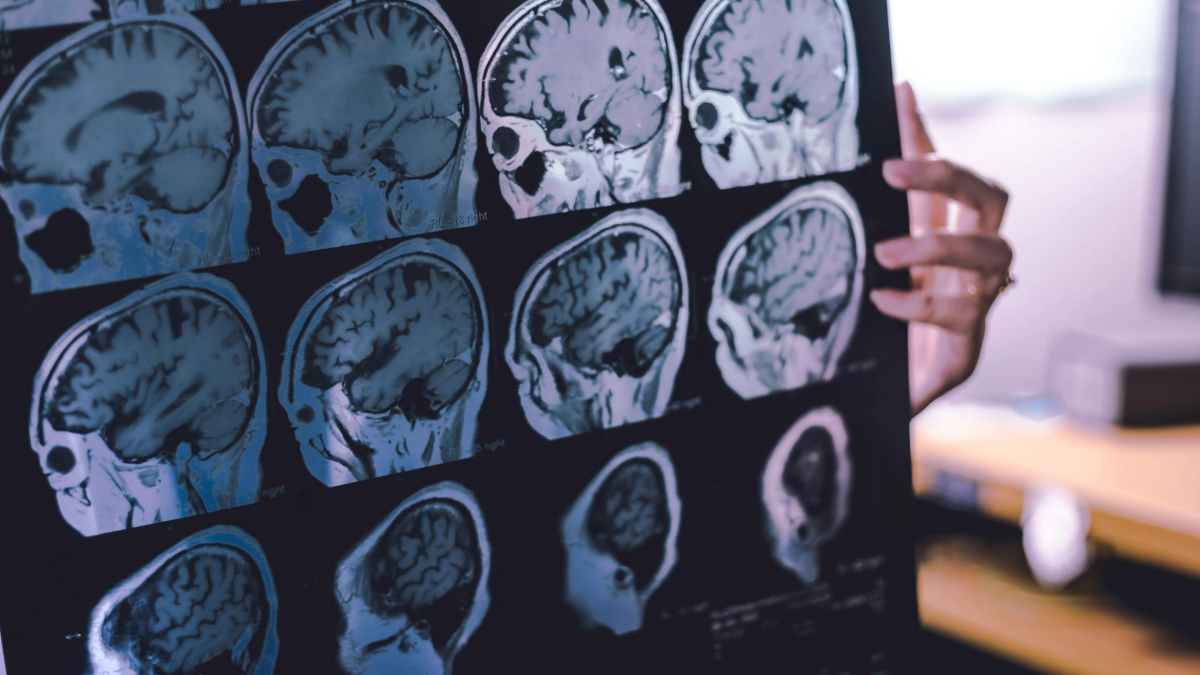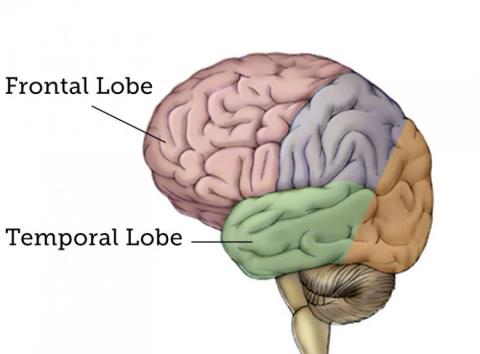
Frontotemporal dementias are less prevalent than Alzheimer’s disease, but they are every bit as destructive. Learn more about this brain disease.
Not long ago, an anxious family consulted me in hopes of understanding a gradual change in their father’s behavior. He was previously known to be a well-controlled, socially polished, successful member of his community. Unexpectedly, in his early 60s, and with no identifiable change in his circumstances or health, his interactions with others began to shift in an unacceptable direction. In public places such as restaurants, he would approach strangers too familiarly. His comments, sometimes rude or inappropriate, were so different from his former self! He made impulsive purchases and lost his temper unpredictably. His family wondered whether this might be the beginning of dementia (now also known as “Major Neurocognitive Disorder” or MND) but that didn’t seem to fit with his apparent lack of a memory problem. He wasn’t drinking excessively or taking medications that would alter his behavior. He had no history of psychiatric illness and his medical health was apparently good.
Around the same time, a woman was brought for assessment by her husband, on referral from her primary care physician (PCP). The PCP, who had known his patient for many years, felt she had changed dramatically since her mid-60s. She seemed to have less understanding of what she heard others say to her. She no longer was able to read with full comprehension at her previous level of enjoyment. Her ability to express herself had diminished and now she often had trouble finding the right word. Her memory remained fairly good and there were no obvious other changes in the health of her body or mind.
What did these two have in common? In both these cases, neuropsychiatric assessment led to a diagnosis of frontotemporal lobar dementia (FTLD, which can also refer to the synonymous name, frontotemporal lobar degeneration). Although the FTLDs are less prevalent than Alzheimer’s disease, they are not uncommon, and they are every bit as destructive—but in some different ways. When cognitive impairment develops, it is important to identify the correct diagnosis in order to suggest the most effective treatment approach.
Is Frontotemporal Dementia Common?
FTLDs are thought to account for about 5 percent of MNDs. Among younger onset cases, those that begin before age 65, they are more common, accounting for 12-22 percent of cases.1 The FTLDs differ from Alzheimer’s disease in clinical presentation and pathology. Treatment appropriate for Alzheimer’s disease sometimes aggravates the symptoms of FTLD.
Two Major Types
The two major types of FTLD clinical pictures are classified as behavioral variant and language variant.2

A person with the behavioral variant develops changes in social and personal conduct, impulsivity, apathy, and sometimes compulsive behavior while maintaining relatively good memory until later in the disorder’s progress.
The language variant has three major subtypes, each of which presents with distinct features:
- Progressive Non-Fluent Aphasia is a gradually progressive disturbance of speech that ends in muteness.
- Logopenic Progressive Aphasia (which is sometimes a variant of Alzheimer’s disease rather than a type of FTLD) is associated with slow speech, poor comprehension, as well as difficulty with sentences, motor repetition, and calculations.
- Semantic Dementia, by contrast, is characterized by a progressive problem with comprehension despite fluent speech.
Although these FTLD variants may begin with a more differentiated picture, in time the affected person may acquire both language and behavioral deficits. The course of the illness is variable, ranging from as brief as two years to as long as 20.
Causes of Frontotemporal Dementia
Accumulation of neuronal proteins is a common feature of the FTLDs, and several different proteins have been identified. This suggests the existence of several syndromes that appear clinically related despite different pathology. The genetic basis for some cases of FTLD is worked out, and it is estimated that some 10 percent to 30 percent of cases are inherited with an autosomal dominant pattern. Autosomal dominant means that you only need to get the abnormal gene from one parent in order to inherit the disease. More than 80 percent of the familial cases are accounted for by mutations in the genes for the proteins MAPT (microtubule-associated protein tau), GRN (progranulin), or C9orf72 (chromosome 9 open reading frame 72).3
Diagnosis
In practice, the diagnosis of FTLD is made clinically on the basis of criteria that include the following:
- The presence of cognitive/behavioral deficits characterized by early and progressive disturbances in personality, behavior, or language.
- Deficits that result in significant social/occupational impairment with gradual onset and continuing decline not due to delirium or another disorder.4
- Structural neuroimaging (CAT scan or MRI) may demonstrate focal frontal lobe atrophy (wasting) consistent with the diagnosis, and functional imaging (e.g. FDG-PET) is likely to show reduced metabolic activity in frontal areas of the brain.
Treatment
The mainstay of dementia care, while we await more effective treatments, is psychosocial and environmental support for the caregivers and patient. Resources can be found through a number of organizations, including the Association for Frontotemporal Degeneration (AFTD).
Medication treatment of FTLD, like that of Alzheimer’s disease, is symptomatic and supportive at this time rather than disease-modifying or curative.
Antidepressant medications such as citalopram or sertraline are sometimes tried empirically, given the prominence of apathy and other mood changes in FTLD. Selective serotonin reuptake inhibitors (SSRIs) have been used and described in case reports and, again, have helped some patients while increasing the symptoms of others. Behavioral symptoms are thought more likely to benefit than cognitive symptoms.
Cholinesterase inhibitors such as donepezil or rivastigmine, often the first medication for Alzheimer’s disease patients, have been reported to have inconsistent effects on people with FTLDs. Sometimes they help and sometimes they aggravate the symptoms. Depending on the person’s circumstances and condition, and on his or her motivation to try an unproven but sometimes helpful treatment, a trial of a cholinesterase inhibitor may be warranted. Similarly, the N-methyl-D-aspartate antagonist (NMDA), memantine, has been reported helpful to some FTLD patients and adverse to others.
Antipsychotic medications such as risperidone or olanzapine have sometimes been prescribed in an attempt to control impulsive or agitated behavior, but there is no consistent evidence to support their use in this way. There is, however, documented reason to be concerned about the safety of the antipsychotic medications in older patients with dementia. For this reason, there should be careful justification for use of these medications and a clear understanding of the possible risks and desired benefits.
The effects of other medication groups, such as stimulants, have been described even less fully, and their use therefore is off-label (like the others), based on limited evidence, and must be monitored closely for adverse outcomes.
Not all MNDs begin with memory loss, and other behavioral changes can reflect neurodegenerative disorders. Gradually progressive impairment of behavior or language, even without memory difficulties, should suggest the possibility of FTLD. In time, research may lead to treatments that are more definitive, but even at present there is help for those patients and families affected by FTLDs.
About BrightFocus Foundation
BrightFocus Foundation is a premier global nonprofit funder of research to defeat Alzheimer’s, macular degeneration, and glaucoma. Since its inception more than 50 years ago, BrightFocus and its flagship research programs—Alzheimer’s Disease Research, Macular Degeneration Research, and National Glaucoma Research—has awarded more than $300 million in research grants to scientists around the world, catalyzing thousands of scientific breakthroughs, life-enhancing treatments, and diagnostic tools. We also share the latest research findings, expert information, and resources to empower the millions impacted by these devastating diseases. Learn more at brightfocus.org.
Disclaimer: The information provided here is a public service of BrightFocus Foundation and is not intended to constitute medical advice. Please consult your physician for personalized medical, dietary, and/or exercise advice. Any medications or supplements should only be taken under medical supervision. BrightFocus Foundation does not endorse any medical products or therapies.
- Other Dementias








